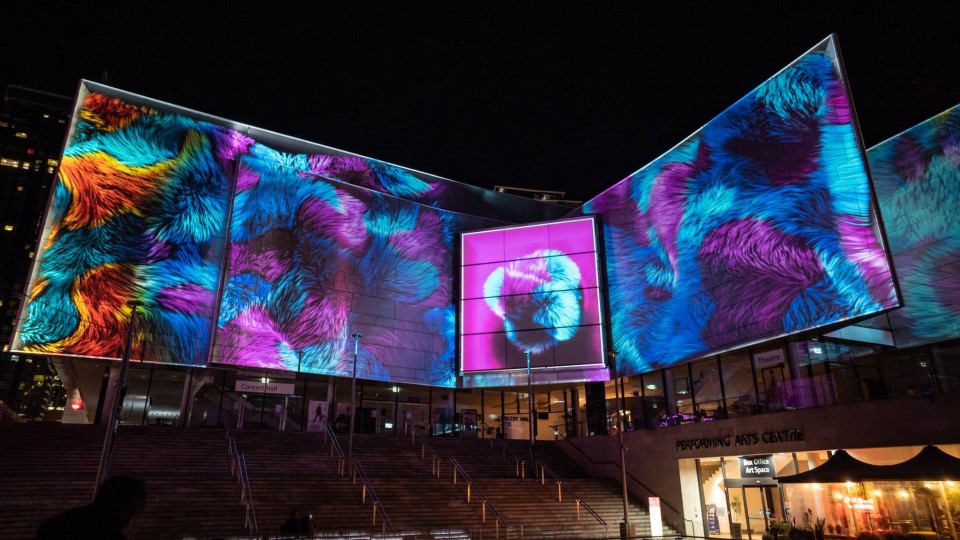The Art of Projection Design: Shaping Realities and Narratives
In the ever-evolving landscape of digital art and live performances, projection designers stand out as modern-day wizards, crafting immersive experiences that transcend the boundaries of traditional storytelling. Through the creative manipulation of light, space, and technology, these artists shape realities and narratives, offering audiences an unparalleled sensory journey.
The Genesis of Projection Design
Projection design, often referred to as video design or projection mapping, is a relatively new art form that has gained significant traction over the past two decades. Its roots can be traced back to early experiments with magic lanterns in the 17th century, which used hand-painted glass slides to project images. Fast forward to the 21st century, and the advent of powerful digital projectors and sophisticated software has propelled projection design into a pivotal role in theater, concerts, installations, and even architecture.
The Role of a Projection Designer
At its core, projection design involves creating visual content that is projected onto surfaces, transforming them into dynamic, interactive canvases. A projection designer’s work is multifaceted, requiring a blend of artistic vision, technical prowess, and storytelling acumen. These designers collaborate closely with directors, set designers, and lighting designers to integrate their projections seamlessly into the overall production.
One of the key challenges for projection designers is to ensure that their visuals enhance the narrative rather than distract from it. This requires a deep understanding of the story being told and the ability to translate abstract concepts into compelling visual metaphors. Whether it’s creating a mystical forest on stage for a theatrical production or transforming a building’s facade into a living, breathing entity for a public installation, projection designers bring stories to life in ways that captivate and engage audiences.
Tools of the Trade
The toolkit of a projection designer is vast and continually expanding. Cutting-edge software like Adobe After Effects, Resolume, and TouchDesigner allows designers to create intricate animations and real-time visual effects. Projection mapping techniques enable designers to warp and blend images onto irregular surfaces, turning any object or structure into a projection surface.
Moreover, advances in technology have opened up new possibilities for interactivity. Motion sensors, cameras, and other input devices can be integrated into projections, allowing for responsive environments where audience movements and actions influence the visuals in real time. This interactivity blurs the line between the audience and the art, creating a participatory experience that is both engaging and memorable.
Case Studies: Projection Design in Action
To truly appreciate the impact of projection design, one need only look at some of the standout projects in recent years. One such example is the work of German projection designer Frieder Weiss, known for his interactive installations that combine dance, technology, and visual art. In his piece “Mortal Engine,” dancers’ movements are tracked by infrared cameras, triggering real-time projections that respond to their gestures, creating a mesmerizing dialogue between body and image.
Another remarkable example is the annual Vivid Sydney festival in Australia, where iconic landmarks like the Sydney Opera House and the Harbour Bridge are transformed into vibrant canvases of light and color. Projection designers from around the world showcase their talents, using the city’s architecture as a backdrop for stunning visual narratives that attract millions of visitors each year.
The Future of Projection Design
As technology continues to advance, the future of projection design holds even greater promise. The integration of augmented reality (AR) and virtual reality (VR) technologies is set to revolutionize the field, offering new ways to immerse audiences in digital environments. Imagine a theater performance where AR glasses allow each audience member to see personalized projections, or a public art installation that uses VR to transport viewers to entirely different worlds.
Furthermore, the increasing accessibility of projection technology means that it is no longer confined to large-scale productions and installations. Smaller theaters, independent artists, and even educators are exploring the potential of projection design to enhance their work and engage their audiences.
Conclusion: The Magic of Light and Imagination
Projection designers are the unsung heroes of modern storytelling, using their unique blend of artistic and technical skills to create experiences that resonate on a deeply emotional level. Their work challenges our perceptions of reality, inviting us to step into worlds where light and imagination reign supreme. As this art form continues to evolve, it promises to unlock new dimensions of creativity and expression, enriching our cultural landscape in ways we have yet to fully comprehend.
In the end, projection design is more than just a technological marvel; it is a testament to the power of human creativity and the enduring allure of storytelling. Through their visionary work, projection designers remind us that, in the right hands, light can be transformed into magic, and reality itself can become a canvas for our wildest dreams.
